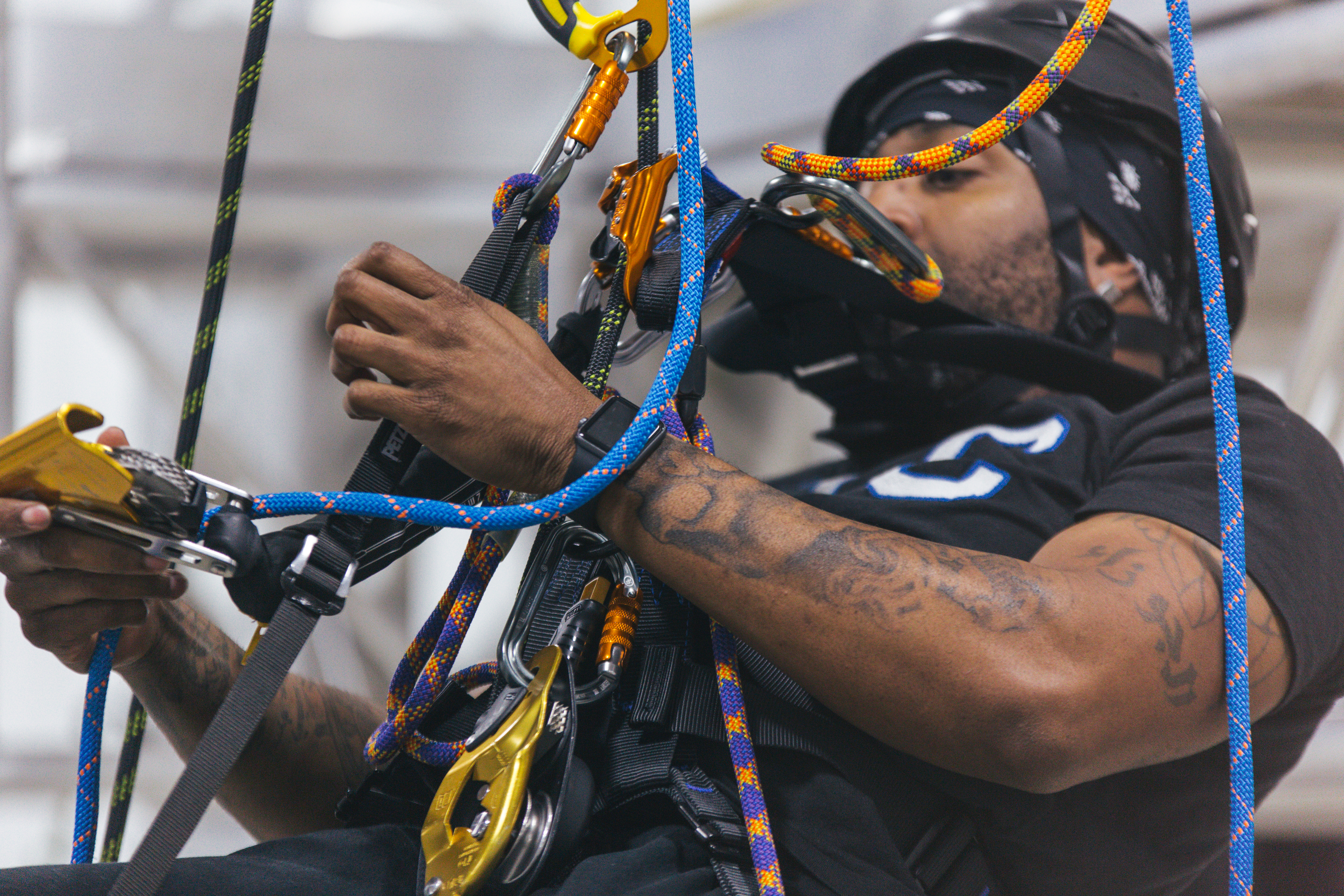
Understanding the Benefits of Rope Access (SPRAT) Training
Entertainment | Safety and Training | By Brian Leister | Nov 12, 2015
Access to the work we do can often be the most challenging aspect of any industry. Not everything can be built or designed for safe and easy access by traditional means. This can lead to some precarious working locations and situations. To address these situations, rope access can be a safe, versatile and efficient method to address a wide variety of challenges when working at height.
Humans have employed rope, of one kind or another, since before recorded history. Despite our historic use of rope, it wasn’t until the 1980s that organizations such as IRATA (Industrial Rope Access Trade Association) and SPRAT (Society of Professional Rope Access Technicians) came about to create standards by which rope access could be applied to industry. Since then, these organizations have cultivated a new mindset for working safely at height.
What is Rope Access?

Rope access is a system in which people use a minimum of two independently anchored ropes and specialized hardware to reach work areas. One rope is used for support and positioning, while the second rope is exclusively a backup system to prevent a fall, should the primary system fail.
The equipment used in rope access is designed specifically for this purpose. There are many recreational climbing products that are not compatible with rope access systems. Knowing the difference is a matter of quality training and proper supervision.
Fatalities and serious injuries from falls are still among OSHA’s Fatal Four hazards in the workplace.
Rope access holds an enviable safety record, compared to all other work-at-height methods. The annual IRATA Work & Safety Analysis provides data supporting this assertion.
The SPRAT certification process has three levels:

- SPRAT Level 1 – Rope Access Worker
- SPRAT Level 2 – Rope Access Lead Technician (Requires 500 hours & 6 months as SPRAT 1)
- SPRAT Level 3 – Rope Access Supervisor (Requires 500 hours & 6 months as SPRAT 2)
SPRAT Level 1 Certification
At level 1, the rope access worker learns how to utilize a two-rope system to access areas at height, negotiate obstacles and perform a basic rescue of an incapacitated partner.
SPRAT Level 2 Certification
For level 2, the rope access lead technician expands their techniques to include lifting and lowering systems for rescue and utility from platforms and overhead situations.
SPRAT Level 3 Certification
At level 3, the rope access supervisor focuses entirely on rescue operations and planning.
All levels of rope access training focus on the skills and knowledge required for maintaining a safe work environment and prompt rescue of those involved.
Cross-Utilizing Rope Access Skills
Certification as a rope access technician opens the door to a wide variety of industries.
It is a vital skill in wind energy, construction, high-rise building maintenance, geotechnical and bridge inspection, as well as theatrical, arena, circus and outdoor live event productions. So, many technicians are able to cross-utilize their special skill sets to find work in multiple industries all over the world.
Columbus McKinnon SPRAT Training
CMCO recognized the importance of training by building a quality curriculum that has been around for almost 30 years. The newest addition to that curriculum is rope access training, which we now offer at our Rock Lititz training facility.
The CM-ET Rope Access Training Program follows SPRAT certification requirements and utilizes independent SPRAT evaluators for the certification process. We offer training and evaluation for all three levels of SPRAT certification. These sessions consist of 4 days of training, with evaluation on the 5th day.

Our Rock Lititz training facility is designed specifically for comprehensive, hands-on training. The CM-ET Rope
Access Training Program utilizes instructors with real-world experience in a variety of industries. Our senior technical trainer is a SPRAT 3/ IRATA 3 Rope Access Technician with 15 years of experience in the entertainment and live event industry and over 10 years of rope access experience.
Aside from training and certification sessions, we also offer free rope access workshops where technicians can sharpen their skills or work on advanced techniques, without the pressure of evaluation. We offer these workshops two days a month. The only requirement is a valid SPRAT or IRATA certification.
CM-ET also offers discounts for SPRAT training to ETCP certified technicians and Rock Lititz community employees. Contact brian.leister@cmworks.com for details and conditions.
*See SPRAT Certification Requirements for details on direct entry and eligibility.
Reference: https://irata.org/page/work-safety-analysis-reports
Brian Leister
Brian Leister is a CM Entertainment Industry Product Trainer located at our Rock Lititz Training Center in Lititz, Pennsylvania. He specializes in entertainment rigging, rope access, and hoist maintenance. Brian is an ETCP certified rigger (Arena) and an ETCP Recognized Trainer. He is also a SPRAT 3 & IRATA 3 certified rope access technician.




 North America - EN
North America - EN


